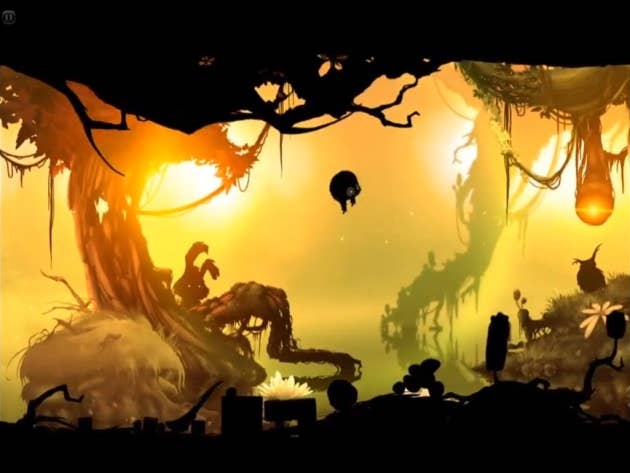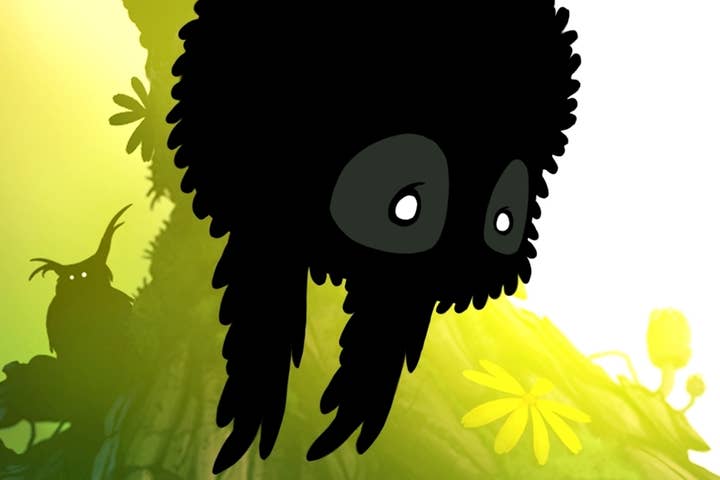Giving Away Your Game is Hard
Frogmind COO Teemu Mäki-Patola (developer of Badland) on how to choose a business model for your mobile game, why F2P may not be best for some
The mobile gaming market has fast become a crazy universe buzzing with users, money, creativity, and entrepreneurship. It's an interesting challenge trying to mine lasting lessons for success from a platform that evolves so rapidly, with such low barriers of entry for creators and consumers alike, where the prevailing wisdom can (and does) change within a matter of months.
Everyone seems to have an opinion on what works best. Go premium. Go free-to-play (F2P). Free-to-play is evil. Be free, but not too free - have in-app purchases. But also have ads for those who don't use in-app purchases. Social media!
It's an electrifying debate - there are success stories for nearly every monetization model you can think of. Personally, I have the utmost respect for any creators who figure out how to get paid for their art. All I can offer to the discussion is a perspective for newcomers from a studio that's made those tough decisions and lived to see another exciting day making games.
First - at the risk of sounding obvious - choosing how to monetize your game is not something you do at the end of the development process; in fact, it should be one of the first things you settle on. This decision defines not only what kind of work goes into making your title, but how much creative freedom you're willing to abdicate to your model and how you choose to interact with your audience. If you decide to make a free-to-play game, you're making a service - not a product. And that tends to flip the rulebook on its head.
The dream, the Rolls-Royce of F2P, the optimized money making machine, is difficult to build and suits only certain types of games. It pretty much requires a social aspect. You soft launch it in some market, collect data, analyze it to death, and tune the numbers until the average revenue per user is higher than the user acquisition cost. Then you show the numbers to someone with cash aplenty so you can afford to storm the top of the lists. This kind of analytics-optimized F2P model is a very business/psychology-driven approach to game development; it's also probably the only one making Supercells. If it all goes well, then you're made: keep pouring in massive amounts of cash to make even more. But what should the rest of us do?
"F2P is where the big money is now; it's where the titans of mobile have already moved. If you're new to school, that might not be the best playground for you"
I don't think anyone should give away their hard work halfheartedly. If you aren't fully willing and able to do the things listed above, you may need to take a step back and reconsider your free-to-play strategy. Making a F2P game that doesn't compromise the core play experience is hard. Conversely, you can absolutely make a great game that's a terrible free-to-play game. You can always join the giant clan of affiliate marketers by making an ad-supported game, but you'll still need large volumes of players, and your business model then is to leak players away from your own product. The paid model is easier for new or small developers; you can focus on the game experience, not selling inside the game.
Frogmind was founded by two guys: a programmer and an artist. They had a strong background in game-making, but lacked the business acumen (or desire) to data mine their audience and extrapolate winning marketing strategies from there. They simply wanted to make a great game - something they would want to play themselves. Given that, premium was clearly the way to go.
If you choose to pursue the premium route, know that the minority is your audience. A successful premium game can feed you, even buy you a nice car if you're lucky, but it is unlikely to make you a billionaire any time soon. Badland sold roughly 100,000 units at $3.99 the week it launched last April. Just to give perspective, although we were unusually successful for a premium title, we didn't even break into the top 50 highest grossing apps in the United States. But that's ok. It was a genuinely amazing accomplishment for such a small studio, and it allows us to continue learning and making the kind of games we want to make. Many great opportunities can follow from success.

Once you're comfortable going after the smaller audience, you can begin the work that'll help sell your paid game. Set a price that communicates quality (also, make a quality product). Don't shortchange your marketing presence, either; a paid game needs to look unique and interesting if it's going to convince consumers to risk their dollars on a whim. Your icon, screenshots, and description need to be top-rate; if you aren't good at that kind of thing, find a friend or a freelancer who is.
Start teasing your game early on, and keep showing new stuff regularly. Don't play all your cards at once, but as soon as you have something cool to show, publish a polished gameplay video. Make sure the game is good before you get it out there, but don't nest it indefinitely - it will never be perfect. Get feedback and react, but not too much - trust your vision. And submit your game to competitions! You can only stand to profit, and winning will give you free marketing and important validation.
Discoverability for new releases is horrendous on all mobile platforms, so like it or not, the owners of the mobile world's very few storefronts are also its gatekeepers. Getting featured makes all the difference. Instead of battling with the F2P goliaths to top the charts, focus on making your premium game catch the eyes of the very enthusiastic gamers at Apple who decide which titles to highlight. If your game has a distinct personality and is well-made, this is a battle you just might be able to win.
This advice is somewhat applicable to Android stores like Google Play, as well, but we frequently hear from fellow devs that you should expect 10 percent to 20 percent of your potential iOS revenue if you go premium there. Given the differences between the markets, and our own desire to simply learn more, we've just released Badland as a F2P title on Android too. It's a different environment from iOS. We hope that by trying something new that fits the game and isn't overly aggressive, we'll be able to expose it to more customers while serving both audiences: premium users, willing to pay for quality, and more casual players comfortable with F2P. We're curious to see how it all goes.
Both free-to-play and premium are vital components of an ever expanding and evolving market, with their own strengths and flaws. F2P is where the big money is now; it's where the titans of mobile have already moved. If you're new to school, that might not be the best playground for you. Frogmind is proof an indie developer can survive with an emphasis on premium pricing. Seize the opportunities that suit you best and learn from the experience. Making a good game is hard enough already - don't take on any unnecessary challenges before you're ready for them.
